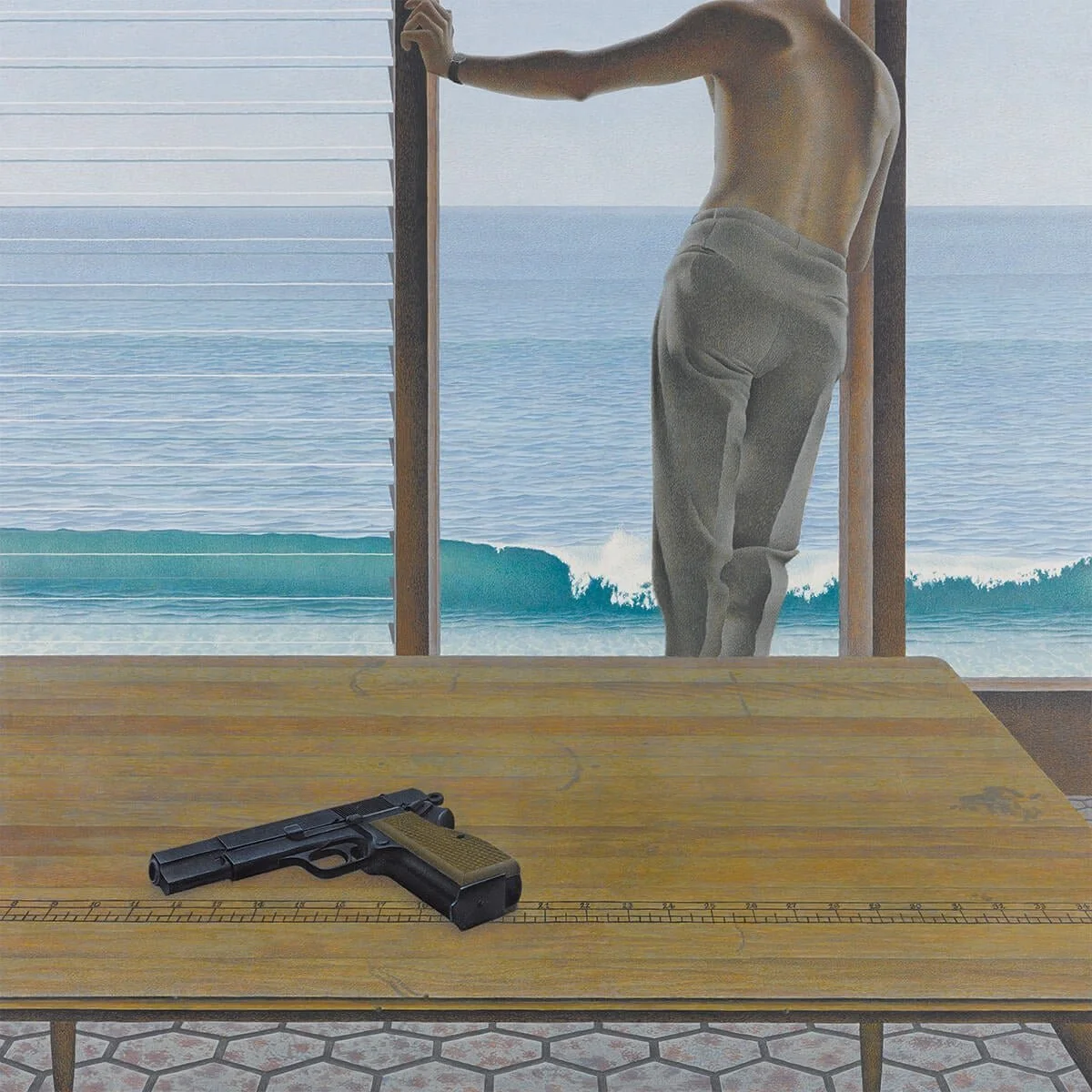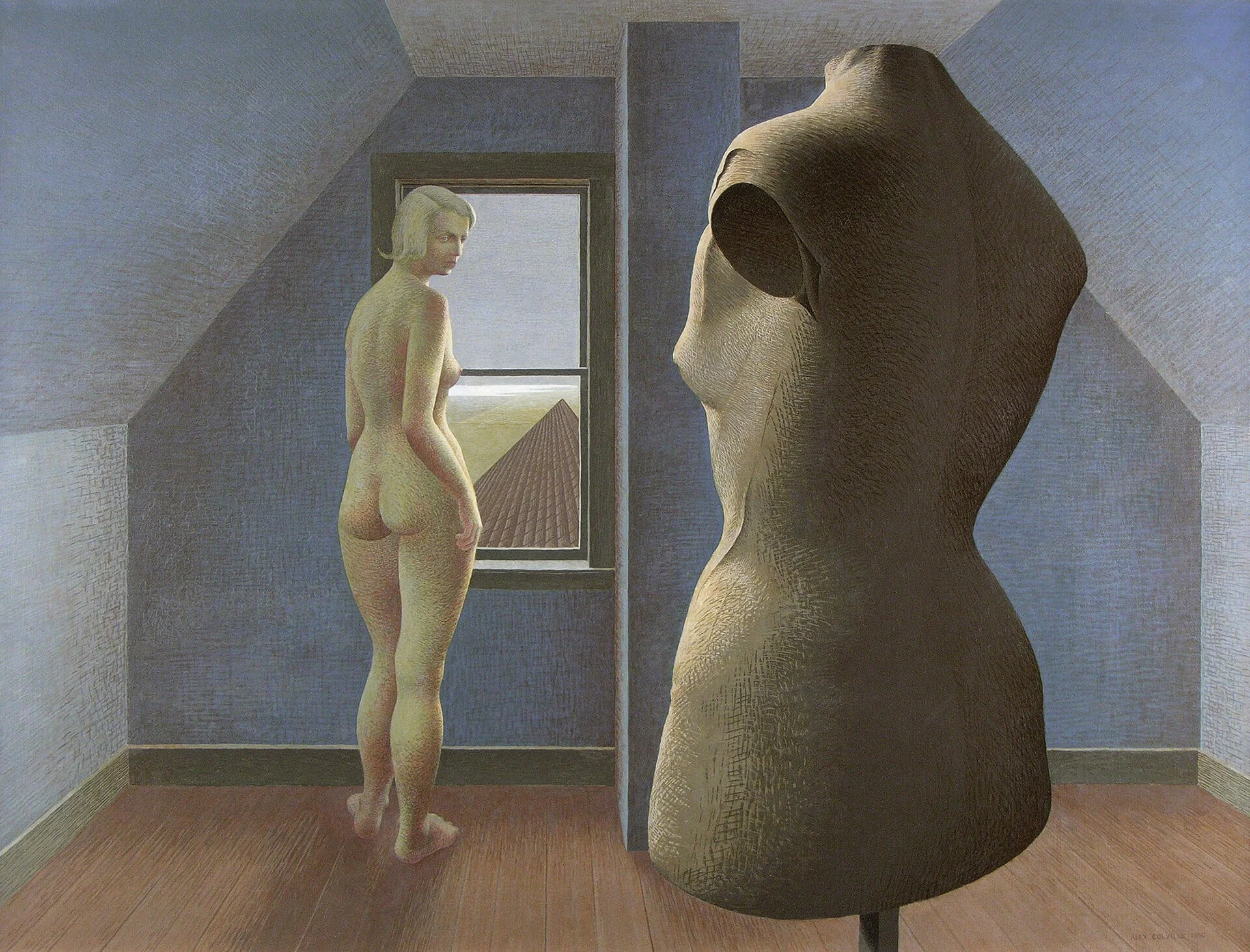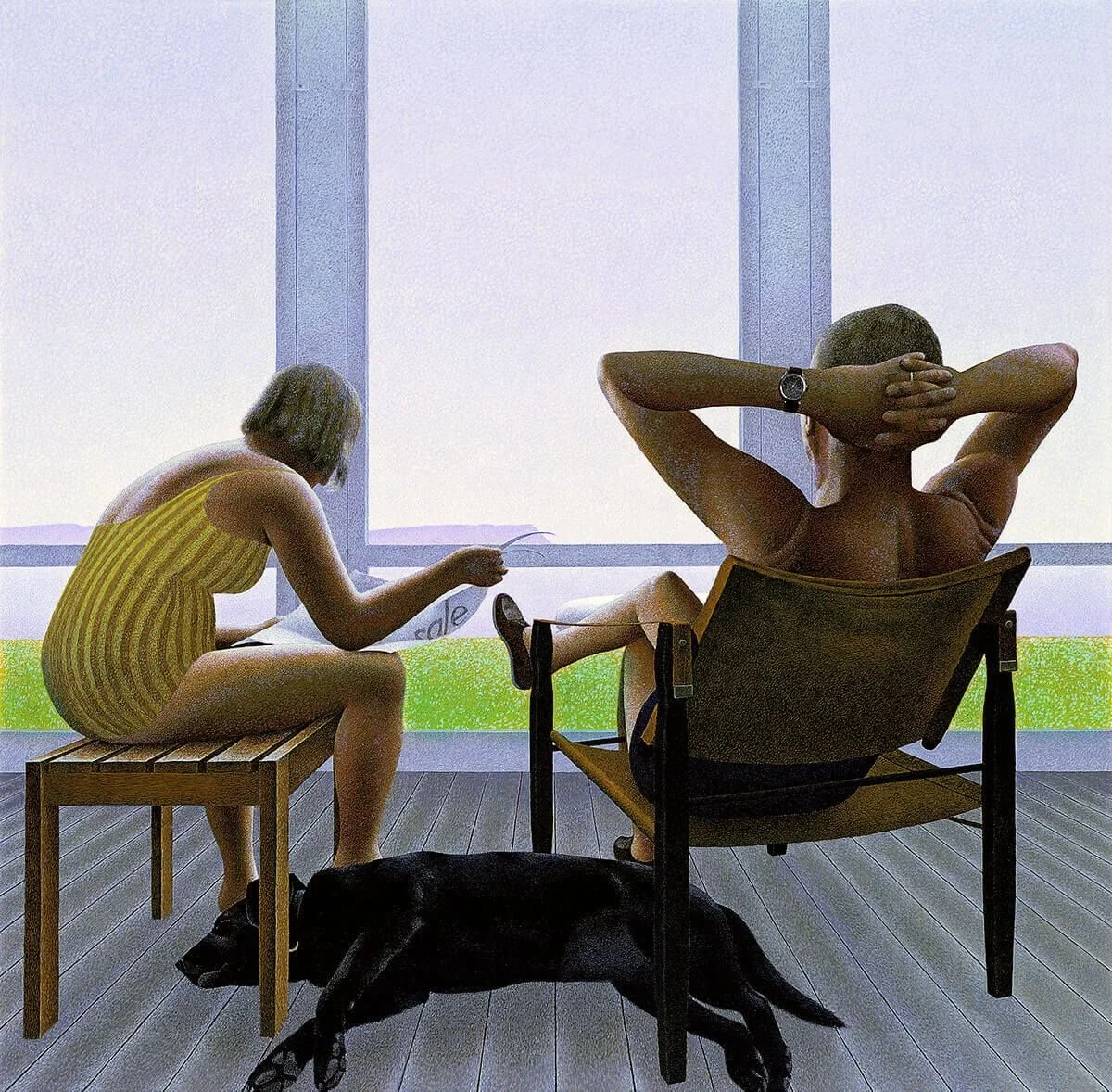“It’s the ordinary things that seem important to me.”
Alex Colville, a Canadian painter, and printmaker, born on August 24, 1920, in Toronto, Ontario, emerged as a prominent figure in the art world for his distinctive style and thought-provoking compositions. His career spanned several decades, during which he created a body of work that captivated audiences with its meticulous detail, psychological depth, and a sense of quiet contemplation.
Raised in Nova Scotia, Colville's early exposure to the maritime landscape and rural life greatly influenced his artistic sensibilities. After serving in the Canadian Army during World War II, where he worked as an official war artist, Colville returned to his studies at Mount Allison University in New Brunswick, completing his Bachelor of Fine Arts degree in 1942.
Colville's art career gained momentum in the 1950s when he began exhibiting his works in solo and group exhibitions. His paintings, often characterized by precise details and a narrative quality, defied easy categorization. Colville's style, sometimes referred to as magic realism, combined realism with an enigmatic and symbolic quality that invited viewers to delve deeper into the narratives he presented.
One of his early masterpieces, "Horse and Train" (1954), captures a surreal scene where a black horse stands on a railway track, facing an oncoming train. The tension in the painting, with the horse appearing frozen against the imminent danger, exemplifies Colville's ability to create a sense of disquiet within everyday scenes.
Colville's exploration of ordinary moments imbued with extraordinary significance became a hallmark of his work. His subjects often included family members, pets, and scenes from everyday life, yet he elevated these seemingly mundane moments into profound reflections on the human condition.
The artist's meticulous attention to detail and composition extended beyond his paintings to his works in printmaking. Colville's skillful use of light and shadow, along with his ability to evoke a sense of stillness and contemplation, earned him critical acclaim. His compositions were carefully constructed, presenting a world that, while rooted in reality, invited viewers to question and reflect on the deeper meanings within the scenes.
Colville's career reached new heights in the 1960s and 1970s, with retrospectives of his work held at prestigious institutions like the Art Gallery of Ontario in Toronto and the National Gallery of Canada in Ottawa. In 1966, he represented Canada at the Venice Biennale, further solidifying his international reputation.
Throughout his career, Colville's art intersected with his interest in philosophy, literature, and the human psyche. His paintings often hinted at existential themes, inviting viewers to ponder the mysteries of life and the complexities of human relationships.
Alex Colville continued to create art well into his later years. His works became highly sought after, and he received numerous awards, including the Order of Canada. Colville's impact on Canadian art was profound, influencing subsequent generations of artists. His legacy lies not only in his paintings but also in his ability to capture the essence of human experience through a unique and contemplative lens.
Alex Colville passed away on July 16, 2013, leaving behind a body of work that continues to be celebrated for its narrative richness, psychological depth, and enduring relevance. His contributions to the art world have solidified his place as one of Canada's most respected and influential artists.
verandah_1983.jpg
My Rating: 7/10
My Rating: 9/10
p.s.
According to international standard ISO 8601, monday is the first day of the week. it is followed by tuesday, wednesday, thursday, friday, and saturday. sunday is the 7th and last day of the week.






